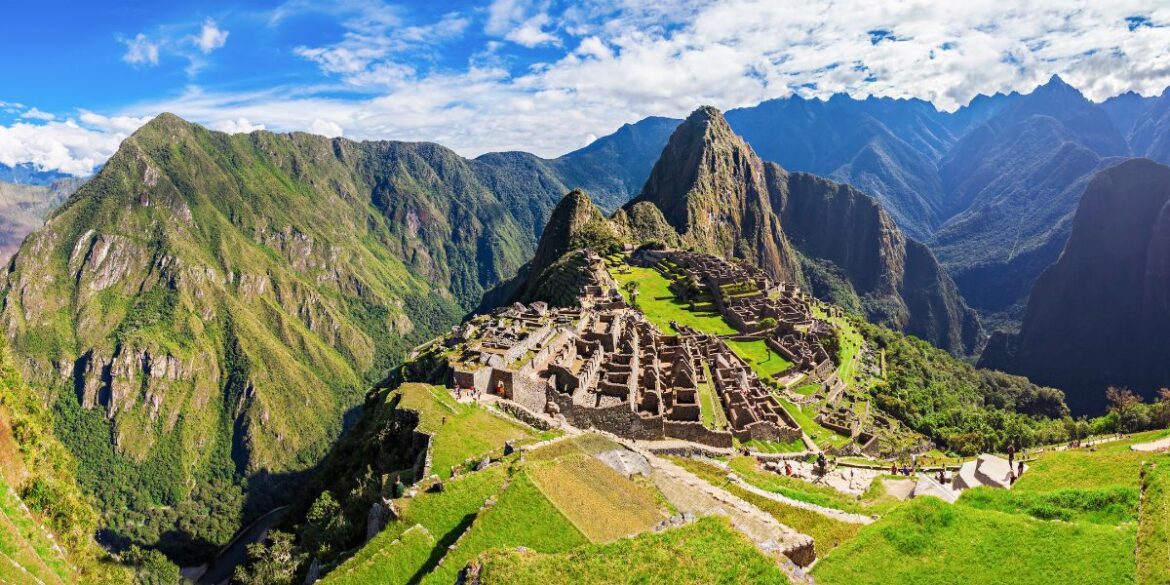Constructed in the 15th century, Macchu Picchu’s strategic architectural placement and the mystery of its original function continue to intrigue researchers and visitors. The site gained international attention following its rediscovery by Hiram Bingham in 1911, revealing a sophisticated network of buildings, terraces, and plazas intricately linked with its natural surroundings, untouched by Spanish conquest.
This iconic site transcends a mere archaeological interest, offering a comprehensive experience that melds the allure of historical discovery with the thrill of exploration and the breathtaking beauty of its mountainous location. Several routes to Machu Picchu cater to diverse preferences, ranging from scenic train rides through the Urubamba Valley, challenging hikes along ancient Inca paths, to comfortable accommodations in nearby lodges that provide restful respites amidst the rugged terrain.
Machu Picchu appeals to a broad audience, including those keen on exploring historical mysteries, outdoor enthusiasts looking for their next adventure, and individuals seeking the tranquility of pristine landscapes. Its status as a UNESCO World Heritage Site not only highlights its global significance but also ensures its preservation for future generations.
Where is Macchu Picchu Located?
Machu Picchu, often hailed as one of the most significant relics of the Inca Empire, is perched in the Eastern Cordillera of southern Peru on a mountain ridge 2,430 meters (7,970 feet) above sea level. This marvel of engineering and architecture is located in the Machupicchu District within the Urubamba Province, approximately 80 kilometers (50 miles) northwest of Cusco. The site overlooks the Sacred Valley and is cradled in a dramatic landscape, surrounded by steep mountains and lush cloud forests, embodying the harmony between human construction and the natural environment.
This ancient Incan citadel, hidden for centuries from the outside world, is situated between the mountain peaks of Machu Picchu (“Old Peak”) and Huayna Picchu (“New Peak”). The location not only provided a strategic view over the surrounding area but also a secluded retreat for the Inca elite. At an elevation of 7,710 feet (2,350 meters), Machu Picchu sits above the Urubamba River valley, in a narrow saddle that is remarkably inaccessible, contributing to its preservation and the mystique that surrounds its discovery in the early 20th century.
The significance of Machu Picchu’s location goes beyond its architectural and historical marvels. It is a testament to the Inca’s mastery of engineering, their understanding of astronomy, and their reverence for the natural world. The site’s alignment with celestial events and the surrounding landscape underscores the Inca’s sophisticated knowledge and spiritual connection to the Earth. Today, Machu Picchu is not only a UNESCO World Heritage site but also a symbol of Peru’s rich cultural heritage and a magnet for travelers seeking to connect with the mystique of ancient civilizations.1
What Is the Best Time of Year to Visit Machu Picchu?
Visiting Machu Picchu, a marvel perched in the Andean Mountains, is a year-round possibility, but the experience can vary dramatically with the seasons. The dry season, spanning from April to October, is widely recommended for its clear skies and less frequent rainfall, making it ideal for trekking and exploring the ruins. June to August is peak tourist season, offering sunny days but also attracting the largest crowds and resulting in long queues.
Conversely, the wet season from November to March brings warmer weather but with higher chances of rain, which can be particularly heavy from December through February. February sees the Inca Trail closed for maintenance due to these conditions. Despite the rain, this season offers the unique beauty of blooming flora and less crowded paths.
Those seeking a balance between pleasant weather and smaller crowds might consider the shoulder months of April, May, September, and October. These periods provide a mix of the dry and wet seasons’ benefits, with fewer tourists and generally good weather, though occasional showers can still occur.
When Was Machu Picchu Discovered?
The discovery of Machu Picchu is a story that captivates with its mix of adventure, mystery, and historical revelation. On July 24, 1911, Hiram Bingham, an American archaeologist and lecturer from Yale University, laid eyes on the ruins of Machu Picchu for the first time, marking a pivotal moment in both the history of South America and the field of archaeology. Bingham was led to the site by a local farmer and an 11-year-old boy, revealing to the world the remnants of what he believed to have been a summer retreat for Inca leaders.
Bingham’s discovery was not just a chance encounter but a part of a meticulous expedition aimed at locating the lost cities of the Incas. He and his team ventured into the Urubamba Valley, guided by local insights, where the architectural magnificence of Machu Picchu lay hidden under dense forestation and was primarily used as agricultural terraces by the indigenous Quechua people. Initially, the site’s full historical and cultural significance was obscured by the overgrowth. However, Bingham’s subsequent return in 1912, supported by Yale and National Geographic along with the endorsement of the Peruvian President, marked the beginning of a more thorough exploration. This endeavor brought to light the intricate stonework and architectural genius of the Incas, despite sparking controversies over the excavation and artifact removal practices that followed.
The narrative of Machu Picchu’s discovery is intertwined with debates on archaeological ethics, the role of indigenous communities in historical narratives, and the impact of global attention on local sites. The site today, beyond its breathtaking beauty and architectural wonder, reveals the complexities of historical discovery, the importance of preserving cultural heritage, and the ongoing dialogue between the past and present.23
How to Visit Macchu Picchu
Visiting Machu Picchu can be a deeply transformative experience, blending adventure with a profound connection to history. There are several paths one can take to reach this majestic site, each offering a unique journey.
By Train
The most accessible way to visit Machu Picchu is by train from Cusco to Aguas Calientes, the nearest town. There are different levels of service to accommodate various preferences and budgets, from the budget-friendly Expedition train to the panoramic Vistadome train, which provides stunning views of the surrounding Andes Mountains. For those seeking a luxury experience, the Belmond Hiram Bingham train offers opulent 1920s-style Pullman carriages, fine dining, and includes a tour of Machu Picchu. The train journey is about 3.5 to 4 hours long, with prices varying throughout the year. It’s recommended to book these trains well in advance, especially during the high season.
By Foot
For the more adventurous, trekking to Machu Picchu presents a remarkable opportunity to expose oneself in the landscape and history of the Inca trails. The classic Inca Trail is the most famous, offering a direct route to Machu Picchu and passing numerous other Incan sites along the way. It’s a 4-day hike that requires booking months in advance due to permit restrictions. Alternatives include the Salkantay Trek, known for its stunning mountain scenery, and the Lares Trek, which offers cultural experiences with local communities and doesn’t require as long in advance to book. These treks vary in difficulty and duration but share the common reward of arriving at Machu Picchu on foot, a truly unforgettable experience.
The Journey to Machu Picchu: Routes and Trail Options
Travelers dreaming of visiting the iconic Machu Picchu have several routes and options to choose from, each offering a unique perspective and experience of the Andean landscape and Inca heritage. Here’s an overview of the most popular ways to reach the ancient citadel:
The Inca Trail
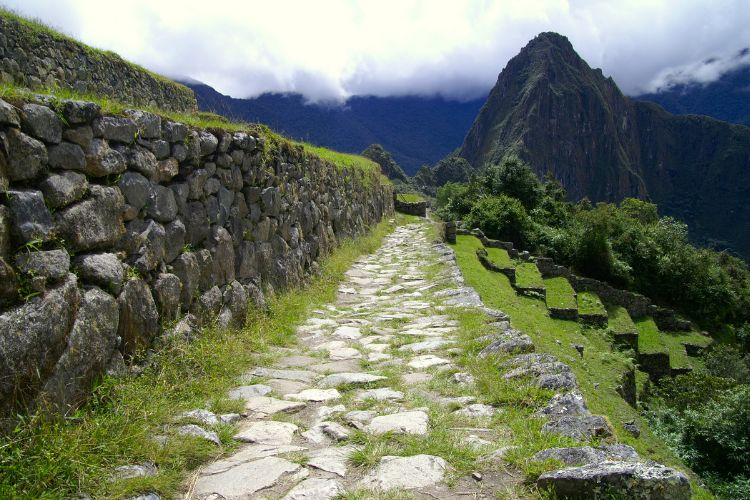
The classic Inca Trail is the most traditional and famous route to Machu Picchu, offering a 2 or 4-day guided hike that covers approximately 43 kilometers through stunning Andean scenery, cloud forests, and past several smaller Inca ruins before culminating at the Sun Gate with breathtaking views of Machu Picchu at sunrise. This trail is highly regulated with limited permits to preserve the path, so booking months in advance is necessary. The trek combines physical challenge with the reward of retracing the footsteps of the Inca themselves.
The Salkantay Trek
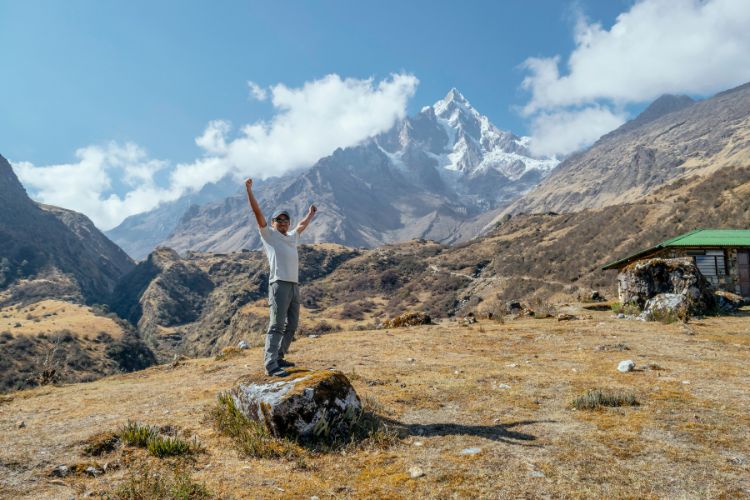
An alternative to the classic Inca Trail, the Salkantay Trek is a 5-day journey that takes trekkers around the magnificent Salkantay Mountain, one of the highest and most stunning in the Peruvian Andes, through changing ecosystems, and eventually to Machu Picchu. This trek is known for its natural beauty, less crowded paths, and does not require the same permits as the Inca Trail, making it a good alternative for those unable to secure Inca Trail permits..
The Lares Trek
Differing from the Inca Trail and Salkantay Trek, the Lares Trek focuses more on cultural experiences, passing through remote Andean villages where trekkers can meet local weavers and farmers, learning about their way of life before eventually taking a train from Ollantaytambo to Aguas Calientes, the gateway town to Machu Picchu. The trek typically lasts 3 to 4 days and offers a combination of cultural immersion and natural beauty. You can book this particular trek with SAM Travel Peru right here on Viator.
Train to Aguas Calientes
For those looking for a less strenuous journey to Machu Picchu, taking a train to Aguas Calientes from Cusco or Ollantaytambo is a comfortable and scenic option. Peru Rail and Inca Rail offer services that traverse the beautiful Urubamba River valley, providing a relaxing way to approach the site. Once in Aguas Calientes, visitors can take a short bus ride up to Machu Picchu (private tour options are available). This option allows travelers to experience the wonder of Machu Picchu even if trekking is not feasible.
Inca Jungle Trail
A less traditional but thrilling option, the Inca Jungle Trail is a multi-activity route that includes biking down mountains, trekking through the jungle, and optional activities like zip-lining and rafting, ending with a visit to Machu Picchu. This adventure-packed route is perfect for those looking for an adrenaline rush on their way to the ancient site.
Luxury Lodges
For those wishing to combine the trekking experience with comfort, several luxury lodge-to-lodge treks are available. These journeys allow hikers to enjoy the beautiful landscapes and challenging hikes during the day while resting in comfortable lodges with gourmet meals and other amenities at night. These treks offer a unique blend of adventure and luxury, catering to those who wish to experience the rugged beauty of the Andes without sacrificing comfort..
Machu Picchu’s Must-See Sites
Machu Picchu, a marvel of ancient Inca civilization, is rich in architectural, astronomical, and cultural wonders. Here are key attractions within the site that offer visitors a glimpse into its historical significance and breathtaking beauty.
Intihuatana Stone
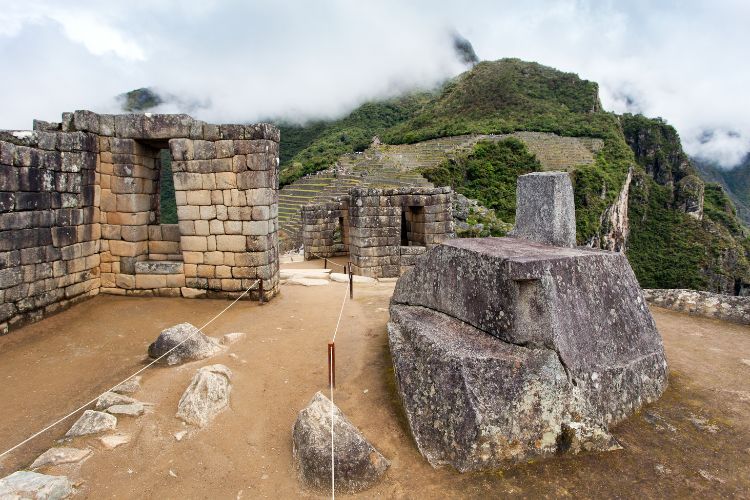
Often misunderstood as a sundial, this stone pillar’s purpose remains a topic of debate among scholars. It’s believed that Inca astronomers might have used it to predict solstices, given that it casts no shadow during these times. The hilltop where it stands offers a profound energy, many visitors claim rejuvenates the body and spirit for further exploration of Machu Picchu.
Inti Punku (Sun Gate)
Marking the entrance used by the elite of Inca society, the Sun Gate offers a commanding view of Machu Picchu. It’s a highlight for many who choose to hike, presenting an iconic panorama of the entire site.
Temple of the Sun
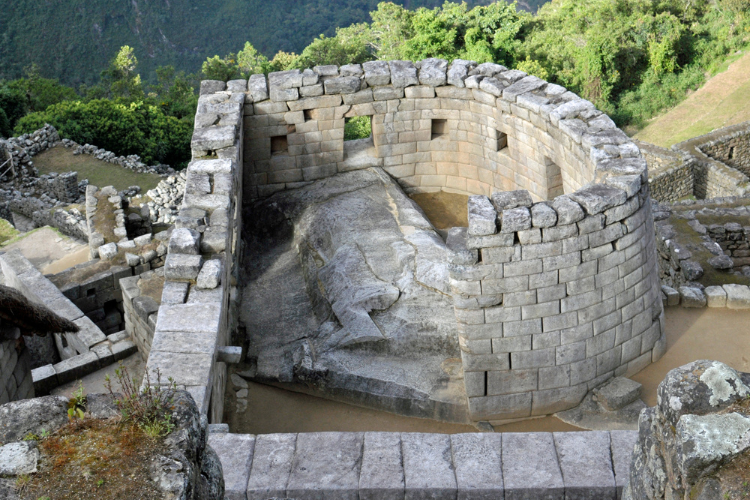
Adjacent to the main fountain, this temple showcases some of the most intricate stonework found in Machu Picchu. It served potentially as an astronomical observatory, where niches within the temple might have held offerings. The precision and craftsmanship of its construction, especially the rounded walls and a trapezoidal window, underscore its significance to the Incas.
Royal Tomb
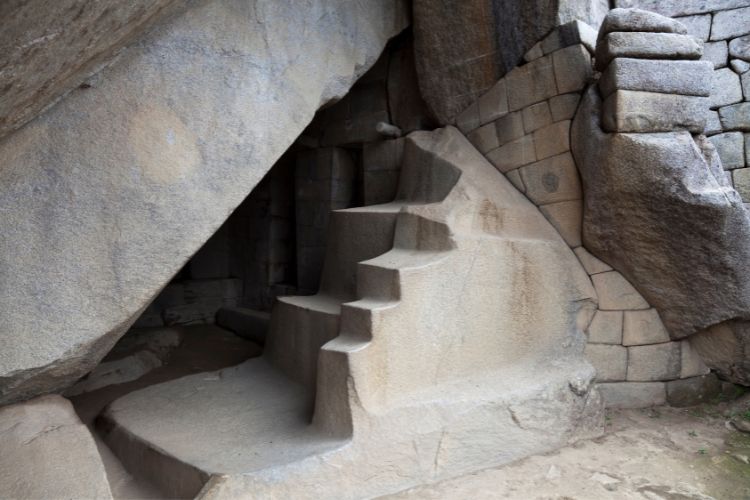
Also known as the Palace of the Princess, located near the Temple of the Sun, this site features an outer wall described by Hiram Bingham as the finest in all the Americas. Although referred to as a ‘tomb,’ no remains have been discovered here, suggesting its purpose might have been ceremonial rather than funerary.
The Temple of the Three Windows
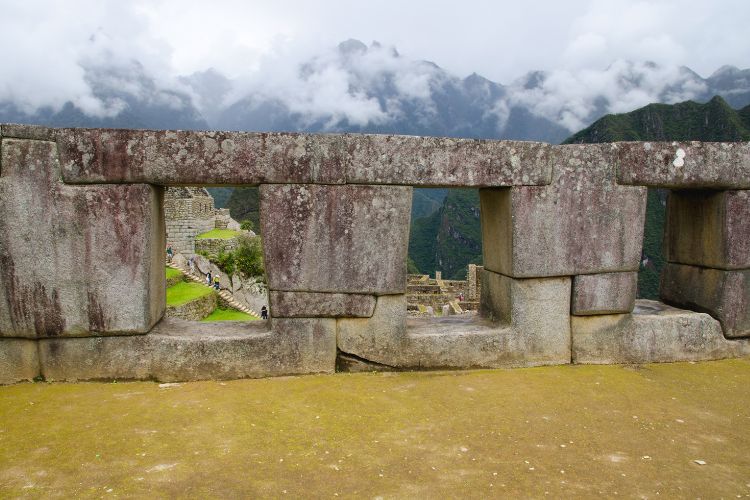
Situated in the Royal sector, this structure is part of what is often called the ‘Sacred Plaza.’ The three large windows perfectly frame the mountains opposite, leading some to believe they symbolize the three mythological caves from which the Ayar brothers, the children of the sun, emerged onto Earth according to Inca legend.
The Principal Temple
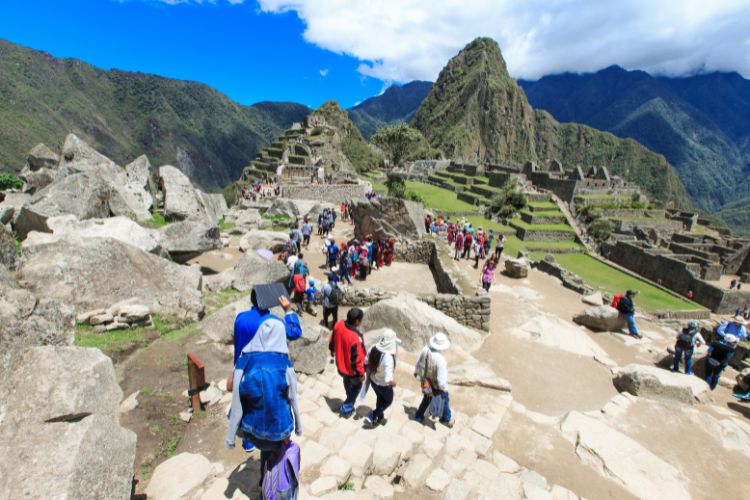
Known for its massive size and sophisticated architecture, this temple’s kite-shaped stone is thought to represent the Southern Cross constellation, highlighting the Incas’ advanced knowledge of astronomy.
Planning Your Visit
Regardless of how you choose to reach Machu Picchu, planning is key. The site has introduced timed entry slots to manage visitor numbers and preserve the integrity of the ruins. Early morning or late afternoon times might offer a more peaceful experience, avoiding the midday crowds. Accommodations range from budget hostels in Aguas Calientes to the exclusive Belmond Sanctuary Lodge, the only hotel located adjacent to the site itself.
How Do I Acquire Tickets to Machu Picchu?
To ensure your visit to Machu Picchu, planning ahead is crucial. Since the number of daily visitors is capped to preserve the site, tickets can sell out months in advance, especially for the high season. Tickets must be purchased for a specific hour window (buy a standard entry ticket here), and late arrivals may forfeit their entry. Once bought, tickets are not refundable or reschedulable.
For those wishing to trek the Inca Trail, it’s important to note that permits are required and also sell out quickly, sometimes up to six months in advance. The Quarry Trail, an alternative route, doesn’t require permits and is less crowded, offering a more solitary experience even during peak season. Booking a pre-arranged guided tour at the links above typically includes permits, making both easier to access.
Purchasing tickets can be done through Machu Picchu’s official website or through tour operators who can also handle permit arrangements for treks. When planning your visit, especially if it includes trekking, it’s advisable to book well in advance to secure your spot and avoid disappointment.
What to Pack for Your Macchu Picchu Adventure
Preparing for your Machu Picchu adventure requires thoughtful packing to ensure you have a comfortable and memorable journey. Considering the diverse landscapes, unpredictable weather, and the physical demands of trekking, here’s a comprehensive packing list tailored for your excursion:
Backpack and Daypacks
- Backpack/Daypack: A 30-36L lightweight backpack is ideal for the Inca Trail, capable of carrying a maximum load of 10kg. For those carrying their own gear, a 40-50L pack may be necessary. Ensure your backpack is weather-resistant and has a multi-size, adjustable harness for a perfect fit. Don’t forget a rain cover.
Essential Gear
- Water Bottle or Hydration Bladder: Staying hydrated is crucial. Carry at least two liters of water each day, either in bottles or a hydration bladder. Consider adding an isotonic powder for energy and better taste.
- Sleeping Bag: Depending on the season, a three-season (-5) bag or a four-season (-10) bag for colder months is suggested. Sleeping bags can be rented, but bringing your own ensures comfort and hygiene.
Clothing
- Layered Clothing: Pack layers for varying temperatures, including trekking shirts, jackets, and windbreakers. Waterproof, worn-in hiking boots with good ankle support are essential. For the evenings at camp, pack a fleece jumper, long pants, thermal underwear, and flip-flops.
- Rain Gear: Even during the dry season, rain showers can occur. A lightweight rain jacket or waterproof poncho will keep you dry and comfortable.
Personal Items
- Passport: A must for checkpoints along the trail and entering Machu Picchu. Make sure it’s the same passport used to book your tour.
- Basic First Aid Kit and Personal Medications: Include headache and diarrhea medication, as well as bandages for blisters. Don’t forget your personal medications and a small supply of toiletries, including a toothbrush, sunscreen, lip balm, and insect repellent.
- Sun Protection: Sunglasses, sunscreen, and a sunhat are essential for protection against the sun’s rays at high altitudes.
Nice-to-Haves
- Trekking Poles: These provide stability and support on uneven terrain. They can be rented locally if you decide not to bring your own.
- Snacks: High-energy snacks like chocolate, nuts, and energy bars are great for quick refueling during the trek.
- Ear Plugs and a Spanish Phrasebook: For a good night’s sleep and practicing your Spanish with locals and fellow trekkers.
Remember, packing light and smart is key to an enjoyable trek. The less unnecessary weight you carry, the more you’ll enjoy the journey to this incredible Incan citadel.
Tips for a Seamless Machu Picchu Experience
Early Arrival: Beat the crowds and the midday sun by arriving early to Machu Picchu. This not only allows for cooler hiking conditions but also offers the chance to experience the citadel in the softer light of morning, which is perfect for photography.
Dealing with Altitude: Acclimatization is key to enjoying your trip without the discomfort of altitude sickness. Spend a few days in Cusco or the Sacred Valley before ascending to Machu Picchu to allow your body to adjust to the elevation. Drinking coca tea and staying hydrated can also help mitigate altitude effects.
Stay Hydrated: The combination of physical exertion and high altitude can quickly lead to dehydration. Carry and consume 2-3 liters of water daily during your trek. Adding electrolytes or isotonic powders can further aid in maintaining energy levels and hydration.
Respecting the Site’s Rules: Machu Picchu is a UNESCO World Heritage site and a revered cultural treasure. Follow all guidelines, such as not climbing on the ruins, sticking to marked paths, and carrying out all your trash, to help preserve its beauty and significance for future generations.
Packing Appropriately: The weather can be quite variable, so pack for all conditions. Waterproof gear, comfortable footwear, and layers will keep you prepared for anything the Andean weather throws at you.
Tour Guide Requirement: All visitors must be accompanied by a licensed tour guide to enter the ruins. Guides ensure visitors understand the significance of the site and adhere to visitation rules.
Entry Times and Shifts: Entry to Machu Picchu is regulated through designated shifts and specific entry times ranging from early morning to early afternoon. You’ll need to choose your visiting time when purchasing your ticket.
Prohibited Items: To protect the integrity of the site, visitors are not allowed to bring tripods, large backpacks over 5 kilos, food, illegal substances, alcoholic beverages, drones, or musical instruments among other restricted items.
Behavioral Expectations: Visitors are expected to respect the sacredness of Machu Picchu by not climbing on walls, making loud noises, smoking, or engaging in any behavior that could damage the site or disturb other visitors (Ticket Machu Picchu).
Sticking to the Path: To minimize impact on the ancient structures, visitors must stay on the established circuits or routes and are not allowed to feed any animals within the site (Ticket Machu Picchu).
Are There Age or Health Restrictions for Visiting Machu Picchu?
While there are no strict age or health restrictions for visiting Machu Picchu, there are several factors to consider for a safe and enjoyable visit:
- Altitude Considerations: Machu Picchu is located at a high altitude, which can affect visitors prone to altitude sickness. It’s advisable to acclimatize in Cusco or the Sacred Valley before your visit and stay hydrated.
- Physical Requirements: The site involves a lot of walking, often on steep and uneven terrain. While anyone in good physical condition should be able to enjoy the site, those with mobility issues may find the terrain challenging. Baby carriages are not allowed, but baby carriers are recommended for visitors with infants.
- Hiking Trails: For those looking to hike mountains like Huayna Picchu or Machu Picchu Mountain, it’s worth noting that these require a good level of fitness due to steep ascents and narrow paths. There are age restrictions for some hikes, such as Huayna Picchu, which is only open to visitors over 12 years of age.
Extending Your Trip: Beyond Machu Picchu
After the awe-inspiring visit to Machu Picchu, the Sacred Valley and Cusco region offer a plethora of destinations rich in Inca history, stunning landscapes, and vibrant local culture worth exploring.
Pisac
Known for its traditional markets brimming with local crafts and textiles, Pisac offers a cultural immersion into Andean life. The trek from Pisac town to the Pisac Ruins is a rewarding uphill journey, presenting beautiful views and a less-traveled path leading to well-preserved ruins. This hike serves as a perfect acclimatization trek for those looking to explore the Andes further.
Ollantaytambo
Often a transit point for those heading to Machu Picchu, Ollantaytambo hosts significant Inca ruins, known for their massive terraces and the Temple of the Sun. The site provides insights into Incan engineering and city planning, with its water channels and cobblestone streets still in use today. It’s an essential stop to witness the strategic military, religious, and agricultural significance of this Inca settlement.
Moray
Unlike any other Inca site, the Moray Ruins with their circular terraces believed to be an agricultural experimental station, showcase the advanced understanding the Incas had of botany and agriculture. Each terrace level creates a distinct microclimate, indicating that the Incas used this site to study the effects of different climatic conditions on crops.
Chinchero
Known for its colorful market and beautiful Andean church, Chinchero offers a mix of Inca and colonial history set against the backdrop of the stunning Cordillera Vilcabamba. The terraced ruins and the textiles sold by local artisans make it a compelling visit for those interested in the cultural and historical layers of the Sacred Valley.
Maras Salt Mines
The Maras Salt Mines, or “Salineras”, are an astonishing sight where thousands of salt pans have been harvested since Inca times. The contrast of white salt pools against the green of the valley makes for breathtaking views, and the site provides a unique look at the continuation of pre-Columbian traditions.
Each path to Machu Picchu offers a unique perspective on this ancient wonder, whether you’re gliding through the Andes by train or stepping along the storied paths walked by the Incas themselves. The journey you choose will enrich your experience, adding layers of adventure, luxury, or cultural immersion to the awe-inspiring destination that awaits.
Frequently Asked Questions About Whether Machu Picchu is Worth a Visit?
Machu Picchu offers a mesmerizing blend of its architectural prowess, historical mystique, and breathtaking natural scenery. This UNESCO World Heritage Site, perched atop the Andes Mountains in Peru, provides a rare glimpse into the ingenious engineering and spiritual depth of the Inca people. Visitors are not only treated to the intricate stonework and architectural marvels of the ancient ruins but are also captivated by the surrounding lush landscapes and panoramic views. The site’s rich history, combined with the mystery of its original purpose and the thrill of exploring a location so beautifully integrated with nature, makes Machu Picchu an unforgettable experience. Its ability to appeal to history buffs, adventure seekers, and those in search of tranquility alike ensures that every visitor leaves with a profound sense of awe and a deeper connection to the past.
Reaching Machu Picchu is an adventure in itself, with options ranging from scenic train rides to exhilarating treks that cater to different tastes and physical abilities.
By Train: The most accessible option is a train journey from Cusco or Ollantaytambo to Aguas Calientes, the gateway town to Machu Picchu. Trains offer various levels of comfort and scenic beauty, from the panoramic windows of the Vistadome to the luxury of the Belmond Hiram Bingham service.
The Classic Inca Trail: For those looking for adventure, the iconic 4-day Inca Trail trek offers an immersive historical and natural experience, passing through ancient sites and stunning landscapes before culminating at the Sun Gate of Machu Picchu.
The Salkantay Trek: An alternative route, the Salkantay Trek, spans 5 days and takes hikers around the majestic Salkantay Mountain, through diverse ecosystems, to reach Machu Picchu, offering breathtaking natural scenery.
The Lares Trek: Focused more on cultural immersion, the Lares Trek passes through remote Andean communities, providing insights into the local way of life, before concluding with a train ride to Aguas Calientes.
Luxury Lodge-to-Lodge Treks: For a blend of adventure and comfort, luxury lodge treks offer the experience of hiking through the Andes with the comfort of staying in high-end lodges each night.
Each route provides a distinct perspective of the Andean landscape and Inca heritage, allowing travelers to choose how they wish to approach the awe-inspiring site of Machu Picchu.
Machu Picchu is revered as a masterful symbol of the Inca Empire’s sophistication in architecture, engineering, and astronomical understanding. Built in the 15th century, this ancient citadel was designed in harmony with its natural surroundings, demonstrating the Incas’ advanced knowledge and respect for the earth. Its strategic location and the mystery of its purpose—whether as a royal estate, a religious site, or an astronomical observatory—continue to fascinate researchers and visitors. The site offers invaluable insights into the Inca civilization and serves as a poignant reminder of human ingenuity and spirituality. The combination of its historical depth, architectural brilliance, and the natural beauty of its mountainous setting makes Machu Picchu an indispensable visit for those seeking to connect with the past and witness the enduring legacy of one of the world’s most remarkable ancient civilizations.
- https://www.britannica.com/place/Machu-Picchu ↩︎
- https://www.history.com/this-day-in-history/machu-picchu-discovered ↩︎
- https://historycollection.com/21-striking-photographs-machu-picchu-discovery/ ↩︎
